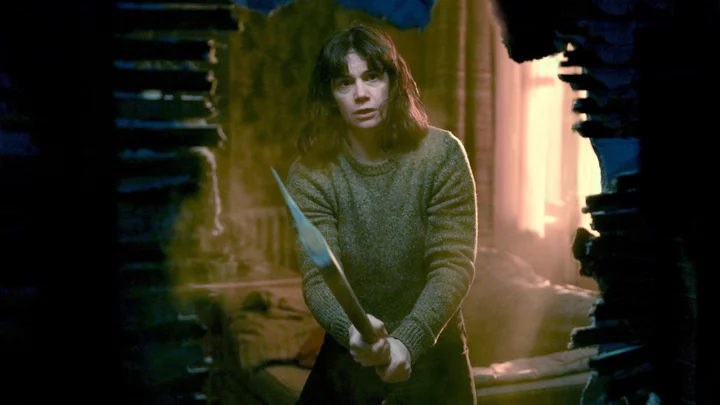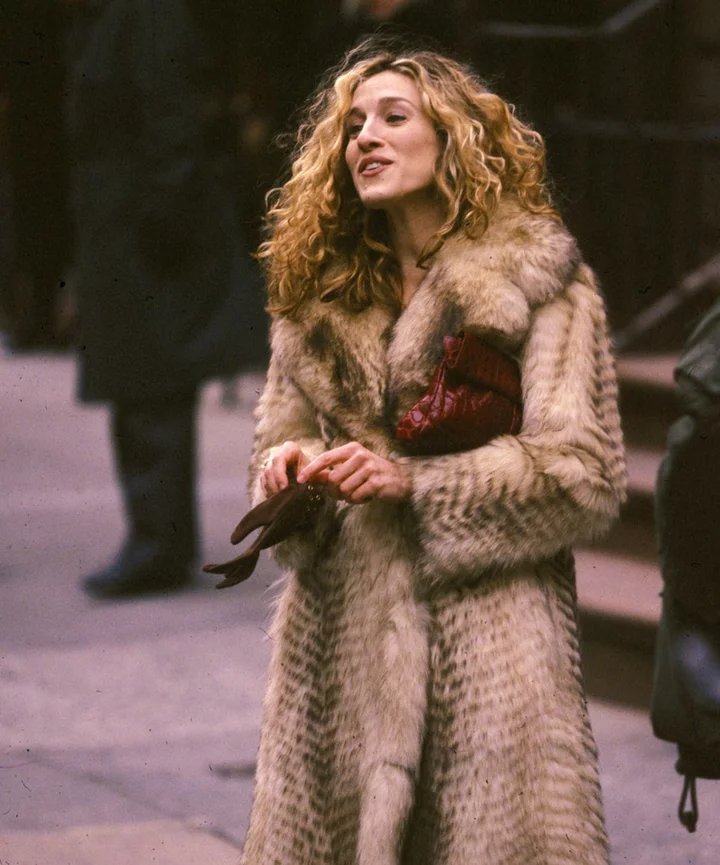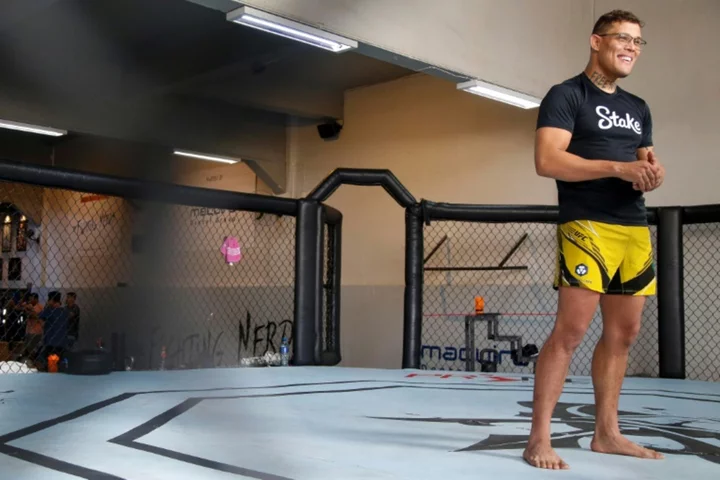What do you know about the Magdalene Laundries? If you grew up in Ireland, or perhaps the UK, you’ve probably heard about this dark part of Irish history. But if you’ve been living elsewhere, chances are you might not have, despite how recently it happened. A criminally underrepresented part of history, it’s the basis of the BBC’s latest genre-blending crime series.
SEE ALSO: The 17 best TV shows of 2023 (so far)Set in West Ireland with Calm with Horses writer Joe Murtagh and director Harry Wootliff at the helm, The Woman in the Wall spotlights this heinous part of Ireland history, without residing solely in the well-trodden genres of true crime or social realism. Instead the series, led by Ruth Wilson and Daryl McCormack, blends these elements with psychological horror, crime procedural, historical drama, and, somehow, black comedy. It all makes for a compelling, well-paced story about the survivors of the Magdalene (pronounced as "maudlin") institutions, including the Church's mother and baby homes.
What were the Magdalene Laundries?
The exterior of the now derelict Sisters of Our Lady of Charity Magdalene Laundry on Sean McDermott St in Dublin. Credit: Julien Behal/PA Images via Getty ImagesWhile the history of the Magdalene Laundries is no secret, it isn’t something taught in every classroom. In fact, it was only launched as a pilot education program for schools in Ireland in 2021.
From approximately 1837 to the closure of the last laundry in 1996, around 10,000 women and girls were forcibly sent to workhouses across Ireland owned by the Roman Catholic church and run by nuns. The inmates of these institutions were deemed “fallen women” — pregnant women who were unmarried or survivors of sexual assault, or simply women branded "flirtatious" or "promiscuous" — and forced into unpaid labour for undetermined lengths of time.
The former Marianvale mother and baby home in Newry, run by the Good Shepherd Sisters, photographed in 2021. Credit: Charles McQuillan/Getty ImagesIn addition, the church operated a series of “mother and baby homes” — former workhouses which housed predominantly unwed pregnant women, who were socially ostracized in the conservative, Catholic country. There, they would give birth, and often their babies were taken away for adoption — a grief shared by Ruth Wilson's character, Lorna Brady, in The Woman in the Wall. Conditions were abysmal and infant mortality rates soared. A proper investigation into these homes only began in the 2010s, and research was published by amateur historian Catherine Corless, which led to the discovery of a mass, unmarked grave containing the remains of hundreds of babies and children at a former home in Tuam, County Galway, where it is alleged approximately 800 died. While a 2021 report by the Mother and Baby Homes Commission found no single cause of death, major causes were identified as "respiratory infections and gastroenteritis" as well as "marasmus [severe undernutrition] suggesting that it indicated that many children in mother and baby homes died because of wilful neglect."
It wasn’t until Feb. 2013 that a State Apology was issued to those incarcerated in the Magdalene institutions and a restorative justice scheme launched, following years of campaigning from the organizations including Justice for Magdalenes, established in 2003, and Magdalene Survivors Together, formed in 2009 following the documentary The Forgotten Maggies. The government ran an inquiry into the mother and baby homes and published a report in 2021, issuing a formal apology to former residents.
If you'd like a brief overview of the history, the podcast Criminal has a comprehensive episode.
The Magdalene Laundries in TV and film
Judi Dench and Steve Coogan in the 2013 film "Philomena". Credit: BBc/Baby Cow Prods/Bfi/Magnolia Mae/Pathe/Kobal/ShutterstockThe Woman in the Wall is not the first film or television series to shed light on the history of the Magdalene Laundries. The Oscar-nominated 2013 film Philomena saw Judi Dench and Steve Coogan delving into the plight of one mother’s five-decade search for her son, based on Philomena Lee's real experience in a convent laundry, as investigated by journalist Martin Sixsmith. A decade earlier, Peter Mullan’s 2002 Golden Lion-winning film The Magdalene Sisters followed three teen girls forcibly sent to a Magdalene asylum.
The Woman in the Wall writer Joe Murtagh decided to pen a series about this part of Ireland's history about 10 years ago when he watched Mullan’s movie at film school.
"I knew nothing about the Magdalene Laundries until I saw that film," Murtaugh told reporters in London. “That was my introduction to the Magdalene Laundries despite being from an Irish family. I've since gone on to learn that for people outside of Ireland, The Magdalene Sisters tends to be their introduction to the Magdalene Laundries, that or Philomena or Patricia Burke Brogan's play Eclipsed in the '80s.”
“I was just absolutely horrified and couldn't believe that this had happened," he said.
2002's "The Magdalene Sisters" by Peter Mullan. Credit: Film Council/Momentum/Kobal/ShutterstockWhat’s even more striking about these events is their recency. As Phillippa Dunne's character Niamh points out in The Woman in the Wall, "It wasn’t medieval times, the fucking ‘Macarena’ was in the charts."
"I obviously grew up hearing about it; I assumed everyone else had heard something about it," Dunne said in London. "More people need to know. Like Niamh says, they can never happen again. I'm very proud to be part of a storyline that involves allowing other people to discover the themes of the mother and baby homes and the laundries and what happened to the survivors."
The real story, told right
To create The Woman in the Wall, beyond their research into the truths of the laundries and mother and baby homes, the production team enlisted the help of campaigner and author Katherine O'Donnell, who was heavily involved with the Justice for Magdalenes movement and co-wrote a book on the path to justice, Ireland and the Magdalene Laundries.
“She introduced us and Joe to a number of survivors," said producer Susan Breen. "We obviously made sure that we were talking to those people, but at the same time, just always trying to tread a really careful line of being sensitive.”
"It wasn’t medieval times, the fucking ‘Macarena’ was in the charts."“Having done all of that research, nothing quite prepared you to speak to the survivors themselves," said Murtaugh. "What I found absolutely incredible about these women, after having read and having a sense of what they've gone through and then hearing it from them themselves, to know that they've gone through as harrowing experience as that and specifically being conditioned by their abusers...to feel absolute shame about themselves as people, for them to then be able to just jump on a Zoom with us and talk about their experiences was genuinely incredible."
Amy Kane (Hilda Fay), Niamh (Philippa Dunne), and Anna (Lynn Rafferty) in "The Woman in the Wall". Credit: BBC/Motive Pictures/Chris BarrIn The Woman in the Wall, a group of survivors of the Magdalene Laundries meets to support each other and make plans to lobby for not only compensation but a public apology, an admission of the church’s treatment of these women. Led by Niamh, this group want justice, they want the history taught in the Irish school curriculum, they want the world to stop denying what happened to them, and they want an official recognition and public apology — marking parallels to the real work done by JFM. But there's an air of wholehearted despondency and resistance from some of the group, understandably suspicious and cynical about law enforcement and the justice system, having watched previous investigations into the laundries dismissed.
"There’s no Earthly justice for what they did to us in that place," says survivor and hotel owner Amy Kane (Hilda Fay).
The Woman in the Wall goes beyond historical drama
While the cruel history of the events of The Woman in the Wall is true, the series spans genres beyond historical drama in order to tell this compelling, harrowing tale. Instead of being set at the time of the Magdalene Laundries, the series takes place in the very recent past in the small town of Kilkinure, County Mayo, home of several women who were shamed, gaslit, and traumatised during this time, including protagonist Lorna Brady, played by Ruth Wilson.
It's quickly clear Lorna is a survivor of the mother and baby homes, with no knowledge of her child's whereabouts — having been sent away to a Magdalene institution by her parents after she became pregnant (“all in your best interests,” they insist), Lorna had her child taken from her immediately after giving birth. Suddenly, in the present, a priest connected to the Magdalene Laundries is murdered, and a mysterious body turns up in Lorna's home, bringing a detective from Blackrock, Dublin (a superb Daryl McCormack) into the small town.
Ruth Wilson as Lorna Brady in "The Woman in the Wall". Credit: BBC/Motive Pictures/Chris BarrMasterfully weaving the series’ core mysteries, the whodunit crime procedural element of the series allows the characters to focus on the investigation while remaining constantly connected to the broader, harrowing history. The series doesn’t lean on social realism to tell the story, as we've seen already with The Magdalene Sisters, instead wielding horror, drama, crime, and other genres in appropriate moments.
“Joe is dramatising trauma in a really interesting way, through psychological horror, through black comedy, crime caper,” Wilson told reporters.
“Everyone involved felt a real weight of responsibility to get it right and to represent the stories of these institutions with truthfulness but also with respect for the survivors,” said producer Breen. “But of course, the show is a very unusual mix of genres. It's not maybe the most obvious approach to telling a story of this nature.
"We talked about it every step of the way and I hope we all help to keep each other right, when it came to making sure that we were putting together, hopefully, an entertaining and gripping drama, but at the same time, something that always at its heart was being sensitive towards the many women and their children who, in one way or another, were affected by the system.”
The Woman in The Wall is now streaming on BBC iPlayer in the UK and will be streaming on Showtime in the U.S. with dates TBC.









